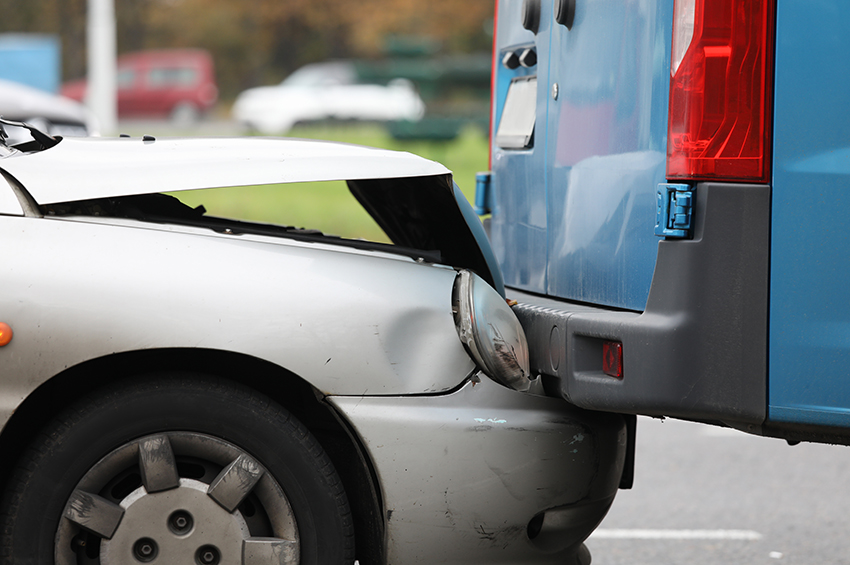
From Reactive to Proactive: Building Safety Behaviors Before Incidents Happen
Every safety director knows the pattern. An incident occurs; perhaps a backing accident in the yard, or something worse on the highway. Suddenly, everyone's attention snaps to safety. There are meetings, new protocols, urgent reminders. For a few weeks, drivers are extra careful. Then, gradually, things drift back to baseline. Until the next incident.
This reactive cycle isn't anyone's fault. It's just how consequences work on human behavior. Incidents create immediate, powerful outcomes that demand our attention and drive action. But here's the opportunity: behavior science shows us we don't have to wait for something to go wrong to build the safety habits that prevent incidents in the first place.
In this post, we'll explore why reactive safety is so common, what behavior science tells us about building proactive safety cultures, and three practical strategies you can start using this week to strengthen safe behaviors across your fleet before incidents happen.
The Reinforcement Trap: Why Incidents Get All the Attention While Safe Behaviors Don't Get Strengthened
If you've ever wondered why safety programs seem to run on a crisis-to-crisis basis, the answer lies in how consequences shape behavior.
 When an incident occurs, it creates immediate and powerful consequences. There are reports to file, investigations to conduct, costs to account for, and leadership asking questions. All of this reinforces our attention to safety, but only after something's already gone wrong. From a behavior science perspective, we're being reinforced for reacting, not for preventing.
When an incident occurs, it creates immediate and powerful consequences. There are reports to file, investigations to conduct, costs to account for, and leadership asking questions. All of this reinforces our attention to safety, but only after something's already gone wrong. From a behavior science perspective, we're being reinforced for reacting, not for preventing.
Meanwhile, the behaviors that actually keep drivers safe, completing thorough pre-trip inspections, maintaining proper following distance, and checking mirrors before every lane change, don't produce positive reinforcement. A driver performs a perfect pre-trip inspection and receives the consequence of being able to start their route on time (which they would have achieved anyway by skipping it). They maintain a safe following distance all day and experience... nothing different than if they'd followed too closely.
In fact, competing behaviors often produce better consequences in the moment. Rushing through or skipping a pre-trip inspection means getting on the road faster. Following more closely means making better time. Without positive reinforcement for safe behaviors, they don't get strengthened. Over time, they become vulnerable to being replaced by behaviors that produce reinforcement, even when those behaviors increase risk.
This creates a fundamental challenge for safety directors managing fleets: the most important safety behaviors are happening (or not happening) out on the road, in situations where drivers experience no positive consequences for doing them right, and where competing unsafe behaviors often feel more rewarding in the moment.
The good news? Once you understand this pattern, you can interrupt it.
Building Habits Through Antecedents and Repeated Practice: The Proactive Safety Advantage
Here's what behavior science teaches us: if we want reliable safety behaviors, we can't depend on naturally occurring consequences alone. We need to focus on what comes before the behavior, the antecedents and environmental cues that prompt safe actions, and deliberately create positive reinforcement so those behaviors get practiced and strengthened over time.
Think about antecedents as the triggers or prompts that increase the likelihood that a specific behavior will happen. A good antecedent makes the safe behavior more likely in the moment. For example, a clearly marked and easily accessible inspection checklist in every cab is an antecedent for pre-trip inspections. A dashboard alert when following distance drops below three seconds is an antecedent for maintaining safe spacing.
But antecedents alone aren't enough. Behaviors become habits through repetition in consistent contexts, especially when they're followed by positive reinforcement. When a driver completes a pre-trip inspection the same way, in the same circumstances, day after day, and experiences positive consequences for doing so, that behavior becomes more automatic. It requires less conscious effort. It's more resistant to being skipped when the driver is rushed or distracted.
This is where leading indicators become powerful. Instead of tracking only lagging indicators (incidents that already happened), proactive safety focuses on the behaviors that predict safety outcomes: inspection completion rates, percentage of trips with safe following distance, frequency of harsh braking events. These behaviors are leading indicators because they happen before incidents occur, and when we measure and strengthen them through positive reinforcement, we're literally building the habits that prevent incidents.
Let's take a concrete example. Say you want drivers to maintain a three-second following distance. The traditional reactive approach waits until there's a rear-end collision, then reminds everyone about following distance. The proactive approach designs antecedents (dashboard alerts, coaching conversations that happen before incidents), tracks the behavior as it happens (telematics showing following distance data), and creates positive reinforcement for doing it right (recognition when drivers maintain a safe distance consistently). The behavior gets practiced, reinforced, and becomes a habit before anyone gets hurt.
Three Strategies to Build Safety Behaviors Before Incidents Strike
Strategy 1: Make Safe Behaviors the Easy Choice Through Environmental Design
The easiest way to increase a behavior is to remove the barriers to doing it. Behavior scientists call this "antecedent intervention," changing the environment to prompt the behavior you want.
Look at your fleet operations and ask: What makes safe behaviors harder than they need to be? Maybe inspection checklists are stored in the office instead of in each vehicle. Maybe drivers have to log into multiple systems to report a near-miss. Maybe the safest route takes 15 minutes longer, creating pressure to cut corners.
Now flip it: What would make safe behaviors easier? Put inspection tools in every cab. Create a one-button near-miss reporting system. Build realistic delivery windows that don't require speeding. Install convex mirrors at blind intersections in your yard.
One fleet we worked with noticed drivers were skipping the walk-around portion of pre-trip inspections during bad weather. Rather than lecture about the importance of inspections, they installed covered walkways around their parking areas. Inspection completion rates increased immediately. They didn't change the driver; they changed the environment.
Strategy 2: Catch People Doing It Right and Deliver Positive Reinforcement
 In reactive safety, the only consequences drivers experience are negative: "You did something wrong." But behavior science is clear: positive reinforcement is far more effective at building and maintaining behaviors than punishment or correction alone.
In reactive safety, the only consequences drivers experience are negative: "You did something wrong." But behavior science is clear: positive reinforcement is far more effective at building and maintaining behaviors than punishment or correction alone.
This means actively looking for safe behaviors and providing positive reinforcement when you see them. Review telematics data not just for violations but for consistently safe performance. When a driver completes 30 consecutive days of pre-trip inspections, acknowledge it. When someone reports a near-miss (giving you valuable information), thank them for speaking up.
The key is making the reinforcement specific and timely. "Great work on safety" is nice, but "I noticed you've maintained safe following distance on 98% of your trips this month, that's exactly the kind of driving that keeps you and everyone else safe" is powerful. It tells the driver exactly which behavior you value and increases the likelihood they'll continue doing it.
This doesn't require elaborate reward programs. Often, specific recognition from a supervisor is more meaningful than a gift card. The behavior you're trying to strengthen is safe driving; the positive reinforcement that strengthens it is knowing that someone noticed and that it matters.
Strategy 3: Create Feedback Loops That Make Progress Visible
Behaviors persist when people can see the impact of their actions. In fleet safety, this is challenging because the "impact" of safe driving is often that nothing bad happens, which is invisible.
The solution is to make the positive impact visible through data and feedback systems. Share leading indicator metrics widely: "Last month, our fleet completed pre-trip inspections on 94% of trips, up from 87% the month before." Create dashboards that show trends in safe following distance, smooth braking, and other behaviors that predict safety outcomes.
Consider creating team-based feedback loops. Instead of only providing individual driver scores, share aggregate data at safety meetings: "As a team, we reduced harsh braking events by 23% this quarter." This builds collective accountability and makes safety a shared mission rather than individual compliance.
Some fleets create visual feedback systems, such as safety scoreboards in the break room, team challenges focused on leading indicators, or simple graphs showing weekly progress on key behaviors. The specific format matters less than the principle: when people can see that their behaviors are making a difference, those behaviors get stronger.
The Shift From Preventing Bad to Building Good
Reactive safety asks: "How do we stop bad things from happening?" Proactive safety asks: "How do we build the behaviors that make good things happen?" It's a subtle shift in language, but it represents a fundamental change in approach.
Instead of waiting for incidents to tell you what needs fixing, you're actively strengthening the behaviors that prevent incidents in the first place. Instead of safety being something that gets attention only after something goes wrong, it becomes something you're building every single day through deliberate positive reinforcement and environmental design.
This doesn't mean you ignore incidents when they happen; of course, you investigate and learn from them. But incidents become one source of information among many, not the only trigger for safety action.
If you're ready to make this shift, here's where to start this week: Pick one safety behavior that matters in your operation, such as pre-trip inspections, safe following distance, or backing procedures. Then ask yourself three questions:
- What environmental changes would make this behavior easier to do consistently?
- How can I catch and acknowledge drivers who are already doing this behavior well?
- How can I make progress on this behavior visible to drivers and the team?
Answer those questions, take one small action on each, and you've begun building proactive safety. The behaviors you strengthen today are the incidents you prevent tomorrow.
